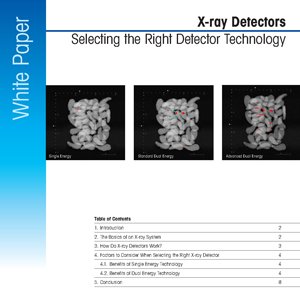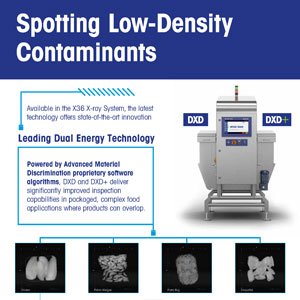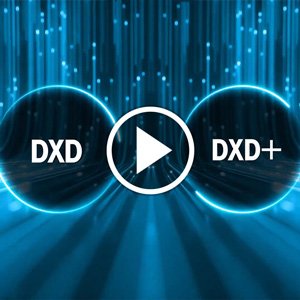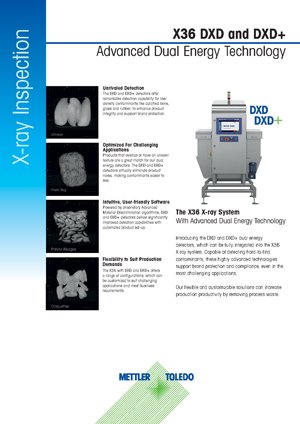
Safeline X-ray Dual Energy Technology
Enhanced Contaminant Detection and Brand Protection
Our DXD and DXD+ dual energy detectors provide unprecedented detection of low-density contaminants in food. Powered by our Advanced Material Discrimination proprietary software, the DXD and DXD+ deliver significantly improved inspection capabilities compared with single energy technology. Browse the latest in dual energy advancements to see how they could benefit your business.
Explore our Services - Tailored to Fit your Equipment
We support and service your product inspection equipment through its entire lifecycle, from installation to preventive maintenance and calibration to equipment repair.
Support & Repair

Maintenance & Optimization

Calibration & Quality

Training & Consulting

- Automated X-ray Inspection Systems
- Chicken Bone X-ray Inspection Systems
- Conveyor Belt X-ray Machines
- Industrial X-ray Inspection Systems
- Pharmaceutical X-ray Inspection Systems
- The X2 X-ray Inspection Series
- X-ray Inspection for Dairy Production
- X-ray Inspection for Pet Food
- X-ray Inspection Systems for Glass Jars
- X-ray Machines for the Food Industry
FAQs
How does dual energy x-ray inspection work differently from single energy x-ray inspection?
Dual energy x-ray inspection systems use advanced discrimination algorithms to detect two different x-ray energy levels. By comparing the two energy levels, dual energy systems can identify material information within a product, largely removing the product noise, allowing contaminants to be detected more easily and more accurately.
In contrast, single energy systems produce a single x-ray image that is compared to a pre-determined acceptance standard. If the material information does not match the acceptance standard, the product is rejected.
What is the target application of an automated dual energy x-ray inspection solution?
Dual energy x-ray technology is well suited to the same applications as single energy. However, dual energy inspection is also recommended for low-density, hard to find contaminants such as non-calcified bone, low mineral glass or rubber all located within complex, overlapping shapes that have a mixed non-uniform density.
Learn more:
What are the main contaminants that industrial dual energy x-ray solutions can identify?
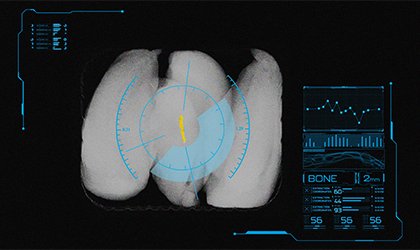
Dual energy inspection works very well at detecting physical contaminants that have a lower, or similar, density to the product (for example: low-density bones in chicken), as well as contaminants that are hidden within products that create complex x-ray images with varying densities (for example: glass in a bag of hashbrown potatoes).
Other contaminants that can often be identified by dual energy solutions include non-calcified bone, low mineral glass and rubber.
Are there different types of dual energy x-ray detection?
There are two types of dual energy: Standard Dual Energy X-ray Detection (DXD) and Advanced Dual Energy X-ray Detection (DXD+).
Standard dual energy uses a standard x-ray generator coupled with dual energy detector hardware. The dual energy detector allows for the comparison of different materials within a product being inspected. This material data, together with our advanced image analysis software, leads to improved contamination detection performance for overlapping products, or with products with low-density contaminants.
Advanced dual energy uses a standard x-ray generator coupled with dual energy detector hardware featuring a unique diode design architecture. This unique diode design architecture enables the collection of even more detailed data about the different materials within the product being inspected. More data allows for more detailed image processing by the image analysis software, leading to an even greater contamination detection performance over standard dual energy.
How can dual energy x-ray inspection systems reduce my false reject rate?
Standard and Advanced Dual Energy X-ray Inspection (known as DXD and DXD+) does not reduce your False Reject Rate (FRR). DXD/DXD+ improves the detection of hard-to-find low-density contaminants within overlapping shapes that have a mixed non-uniform density. However, we cannot guarantee to find every physical contaminant and we cannot guarantee that we will not find a ‘false’ contaminant. We can optimize the DXD/DXD+ inspection software to reduce the False Reject Rate (FRR) but this rate may be no better or worse than the FRR for a conventional single energy x-ray system.
Dual Energy’s main benefit is providing more precise contamination detection for hard-to-find physical contaminants in traditionally challenging applications such as pasta, frozen fruit, chicken bones, and other overlapping, complex products that have proven to be difficult applications for single energy x-ray inspection systems to manage.
